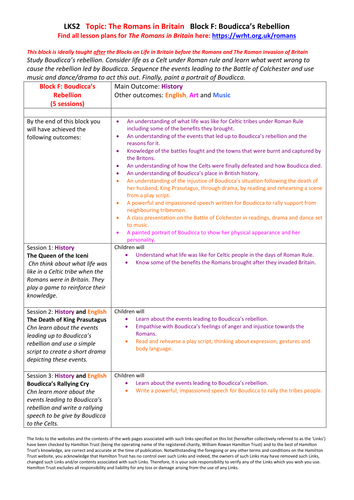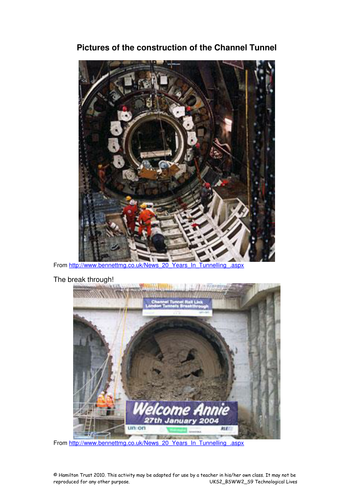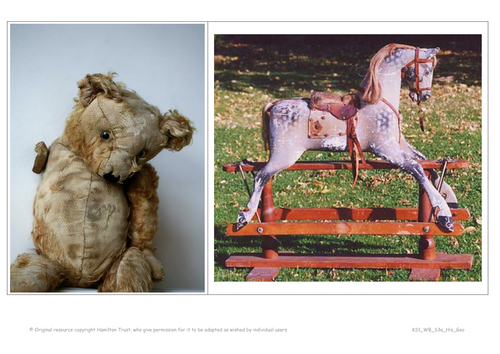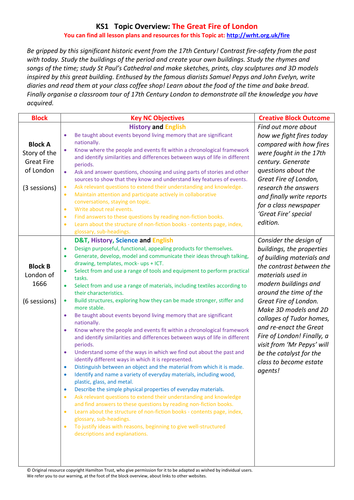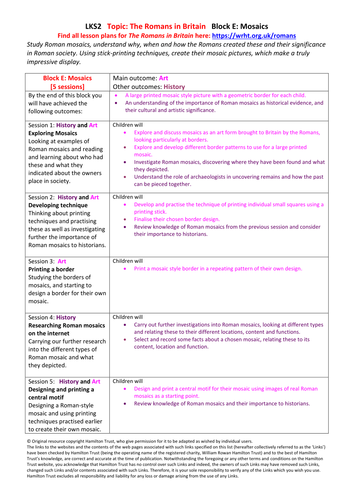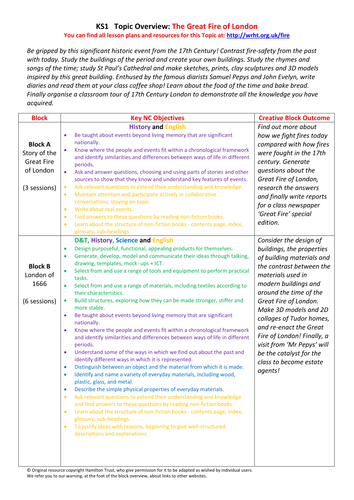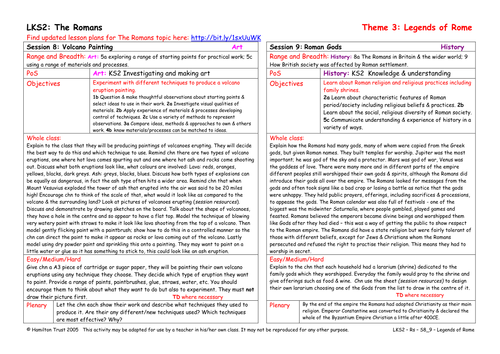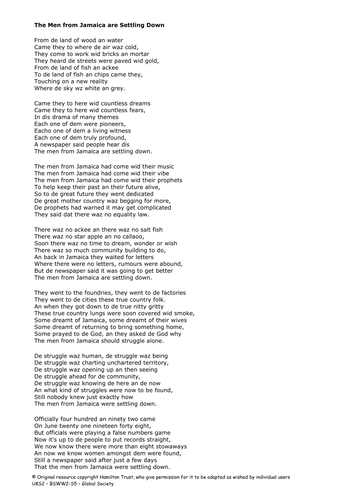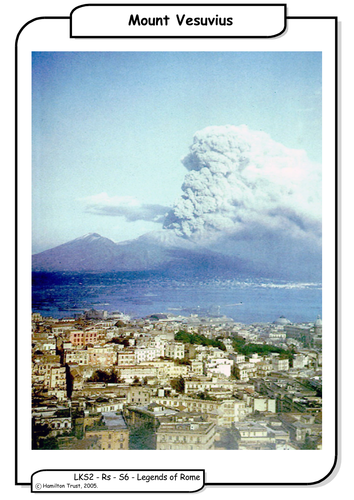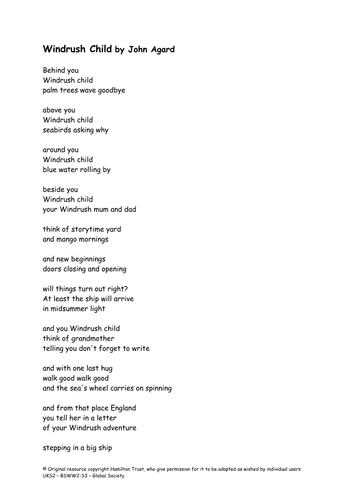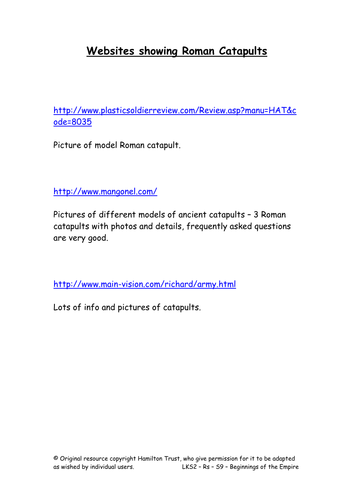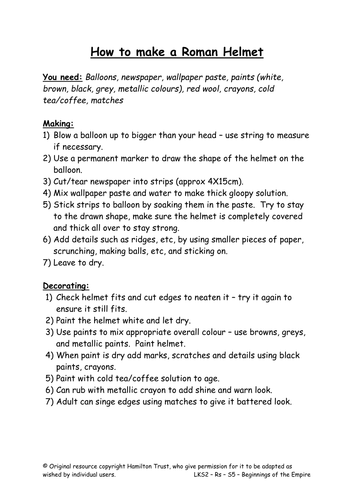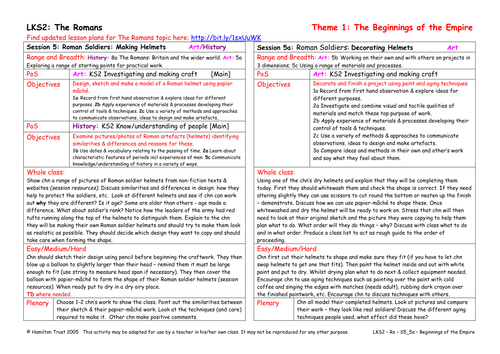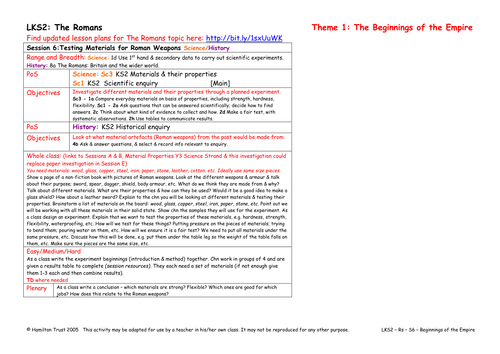
3k+Uploads
10009k+Views
11617k+Downloads
History

Energy
This session we consider how we are using up fossil fuels. How did we heat our homes and cook in the past? Discuss renewable energy and any local schemes to try and use more renewable energy. Challenge children to make a solar oven and cook something with it!

Roman army and busts
This block introduces the Roman Army. What was its organisation? What were the Roman soldiers like and why did so many Britons join the Roman army? Children learn about the army and then use this knowledge to help them understand how Roman busts differed from their Greek equivalent. They create their own Roman Bust in relief from clay.
Includes:
- Topic Overview
- Block Overview
- Lesson 01: Understanding why the Roman army was so powerful
Children learn about the Roman army and train together, being given orders by a centurion. They act out a battle.
- Lesson 02: Understanding the power of the Roman army through 3D art
Children explore some of the features of the Roman Army by looking at the differences between Roman & Greek busts.
- Lesson 03: Recording different facial expressions in sketchbooks and experimenting with clay
Children start to plan and design their Roman busts, thinking about the features and expression of a soldier in the Roman Army.
- Lesson 04: Creating a fierce depiction of themselves from clay
Children re-cap all they have learned about the Roman Army. Then they create a Roman bust in relief from clay.
Find more lesson plans and resources at www. hamilton-trust.org.uk.

Boudicca's rebellion
Children study Boudicca’s rebellion.
They consider life as a Celt under Roman rule and learn what went wrong to cause the rebellion led by Boudicca. They sequence the events leading to the Battle of Colchester and use music and dance/drama to act this out. Finally they paint a portrait of Boudicca.
Includes:
- Topic Overview
- Block Overview
- Lesson 01: The Queen of the Iceni
Children think about what life was like in a Celtic tribe when the Romans were in Britain. They play a game to reinforce their knowledge.
- Lesson 02: The death of King Prasutagus
Children learn about the events leading up to Boudicca’s rebellion and use a simple script to create a short drama depicting these events.
- Lesson 03: Boudicca’s rallying cry
Children learn more about the events leading to Boudicca’s rebellion and write a rallying speech to be give by Boudicca to the Celts.
- Lesson 04: The Battle of Colchester
Children learn about the battles fought between Boudicca and the Romans. Using soundtrack of Mornay’s dream, they perform a dance/drama of the Battle of Colchester.
- Lesson 05: The story ends and the legend begins
Children learn how Boudicaa’s rebellion ended and create a portrait of Boudicca showing her character as a warrior and a proud leader of her tribe’s people.
This block is part of our Key Stage 2 Cross-Curricular Topic The Romans in Britain.

Crossing The Channel
Children discuss ways of crossing the Channel and then make a balloon-powered hovercraft.

Shopping Basket
Look at products that would be on weekly shopping list, consider the different ways in which these were sold – less packaging. Discuss equivalents between imperial and metric measurements and money. Children convert prices or sort foods into then and now.

How old is my toy?
How do we know that a toy is old? What happens to our toys when they get played with lots? Children explore different toys and look for the signs of age. They choose precise words and explain their reasoning in detail.
Suitable for Years 1 and 2.

The Great Fire of London - Diaries - Key Stage 1
Be gripped by this significant historic event from the 17th Century!
Find out about the famous diarists Samuel Pepys and John Evelyn. Write your own diary entries, including a realistic entry set during the Great Fire. Finally, share diaries in a ‘coffee house’ setting to celebrate the completion of this block.
Includes:
- Topic Overview
- Block Overview
- Lesson 01: Who ARE they?
Find out about famous diarists Samuel Pepys and John Evelyn; learn about the art of diary writing and write your own diary entry.
- Lesson 02: FREEZE!
Role-play scenes from the Great Fire of London that were captured in diary entries at the time; Perform and perfect your scenes; capture a key moment in a ‘freeze frame’ photograph.
- Lesson 03: What did you say?
Look carefully at your freeze frame pictures; write speech bubbles to depict the emotions experienced by the people in the scene.
- Lesson 04: Quills and ink!
Learn about the writing implements of the 17th Century; make your own quill and ink; write a realistic looking diary page about an incident during the Great Fire of London 1666.
- Lesson 05: Coffee House!
Use paint to recreate an authentic looking diary cover for your historic diary; read your diary to other children in a ‘coffee house’ setting to celebrate the completion of this block.
Find more lesson plans and resources at www. hamilton-trust.org.uk.

Roman mosaics
Children study Roman mosaics, understanding why, when and how the Romans created these and their significance in Roman society. Using stick-printing techniques, children create their own mosaic pictures, which make a truly impressive display.
Includes:
- Topic Overview
- Block Overview
- Lesson 01: Exploring mosaics
Looking at examples of Roman mosaics and reading and learning about who had these and what they indicated about the owners place in society.
- Lesson 02: Developing technique
Thinking about printing techniques and practising these as well as investigating further the importance of Roman mosaics to historians.
- Lesson 03: Printing a border
Studying the borders of mosaics, and starting to design a border for their own mosaic.
- Lesson 04: Researching Roman mosaics
Carrying our further research into the different types of Roman mosaic and what they depicted.
- Lesson 05: Printing a central motif
Designing a Roman-style mosaic and using printing techniques practised earlier to create their own mosaic.
Hamilton’s cross-curricular topics provide extensive planning resources to facilitate teaching a range of subjects under specific historical, geographic or thematic umbrellas.

Washing Machines and Spin Driers
Children look at labour saving household inventions, order picture of machines across the decades and then carry out an experiment to find out how spin driers work.

The Great Fire of London - London of 1666 - Key Stage 1
Be gripped by this significant historic event from the 17th Century!
Consider the design of buildings, the properties of building materials and the contrast between the materials used in modern buildings and around the time of the Great Fire of London. Make 3D models and 2D collages of Tudor homes, and re-enact the Great Fire of London! Finally, a visit from ‘Mr Pepys’ will be the catalyst for the class to become Stuart estate agents!
Includes:
- Topic Overview
- Block Overview
- Lesson 01: Fantasy buildings & Resource
Discuss the properties of ideal buildings, including function and materials (this is an ideal opportunity to plan a visit from an Architect).
- Lesson 02: Building materials
Learn about the properties of materials used in modern building construction, including around the exterior of the school.
- Lesson 03: Builders then and now (part 1)
Compare and contrast building materials available today and 450 years ago using research and practical tasks.
- Lesson 04: Builders then and now (part 2)
Evaluate the stability of Tudor buildings by creating 3D models, 2D collages and labelled diagrams and making wattle and daub.
- Lesson 05: London's burning!
Create a model Tudor street and consider the effects of it burning down.
- Lesson 06: Estate Agents
Write Tudor property descriptions, using historical knowledge, and present them in role to ‘Mr Pepys’.
Find more lesson plans and resources at www. hamilton-trust.org.uk.

Roman Gods
Children study the history of religion in Roman times, looking at the Gods the Romans worshipped and at how they came to believe Emperors were divine. They look at festivals, including Saturnalia, and then design their own lararium (family shrine).
Suitable for years 3 and 4.
Find other lesson plans and resources at www.hamilton-trust.org.uk.

Notting Hill Carnival
Read Benjamin Zephaniah’s poem The Men from Jamaica are Settling Down. Discuss the treatment that migrants from the Caribbean received from some British people. Explain how this lead to riots and the first Notting Hill Carnival. Children design carnival costume.

Story of Mount Vesuvius
Children discuss the differences between legend and history – mentioning famous legends about Rome and also historical events. They are told the story of Mount Vesuvius erupting, and then write their own eye-witness account of the event using imagination.
Suitable for years 3 and 4.
Find other lesson plans and resources at www.hamilton-trust.org.uk.

Windrush
Read the poem Windrush Child by John Agard and get children’s reactions. Give brief history of SS Windrush’s journey to Britain in 1948. Children either mark the journey on a map or answer questions about photographs to do with Caribbean immigration on the Windrush.

Design & Make Catapults
Children look again at Roman catapults. Using a wide variety of materials, incl some mechanical components, they design & create a working model of a catapult in the Roman style. They develop their ideas, then compete to see whose catapult works best!
Suitable for years 3 and 4.

Roman entertainment
Children explore the ways in which the Romans entertained themselves and others in the empire by holding gladiator fights and chariot racing. In order to get to grips with what this involved, children design and build their own chariot and then race it!
Includes:
- Topic Overview
- Block Overview
- Lesson 01: Using artefacts to learn about Roman gladiators
Children look at (hopefully in the context of a visit to a museum or Roman site) artefacts from Roman times and think about their function and attributes.
- Lesson 02: Researching chariot racing
Children investigate a variety of vehicles and understand how they move.
- Lesson 03: Explaining how wheels and axles work
Children understand that wheels and axles can be assembled in different ways.
- Lesson 04: Designing a Roman chariot
Children work together and individually to design a chariot, deciding what materials they will use.
- Lesson 05: Making a Roman chariot
Children use variety of tools and materials to create their own chariot.
- Lesson 06: Evaluating the Roman chariot design
Children compare their chariots, looking at the things that worked and those that they would do differently.
Find more lesson plans and resources at www. hamilton-trust.org.uk.

Roman Buildings and Engineering
What buildings did the Romans build and for what purposes? How did they solve practical engineering problems such as providing enough water for their towns and cities, and enabling the army to get from A to B. Children study Roman roads, buildings and aqueducts. They build models, carry out scientific tests and make a presentation of all they have found out.
Includes:
- Topic Overview
- Block Overview
- Lesson 01: Roman architecture
Children study the types and architecture of Roman buildings, including the use of columns, pediments, colonnades, etc. They make a model Roman building.
- Lesson 02: Testing the strength of columns
Continuing to look at aspects of Roman architectural style, children consider the varieties of 3D shape which can be used to hold up the weight of a roof and further stories. They conduct a fair scientific test.
- Lesson 03: Roman arches
Why did the Romans use so many arches? Children conduct an investigation on effectiveness of different shaped arches by manipulating length of span and measuring height and load bearing strength.
- Lesson 04: Roman roads
Children learn how Roman roads were made and where they were built. They place Roman towns and cities on a map of Britain.
- Lesson 05: Roman aqueducts
Understanding how the Romans carried water using aqueducts, children begin to make a cardboard model aqueduct.
- Lesson 06: Finishing the model aqueduct
Children complete their model aqueduct and prepare and present information on Roman architecture.
Hamilton’s cross-curricular topics provide extensive planning resources to facilitate teaching a range of subjects under specific historical, geographic or thematic umbrellas.

Making Roman Helmets: Making Helmets
Following the work on soldiers in session 4, children study the helmets worn by different Roman soldiers. They identify similarities and differences and the reasons for these (age, rank, etc.) Then they plan to make a Roman soldier helmet in papier-mâché.
Suitable for years 3 and 4.
Find other lesson plans and resources at www.hamilton-trust.org.uk.

Roman Soldiers: Decorating Helmets
Children continue to create their replica of a Roman soldier helmet. They use shaping techniques to improve their original papier-mache shape, and then finishing techniques to achieve a final effect. They comment on their own work and others’.
Suitable for years 3 and 4.
Find other lesson plans and resources at www.hamilton-trust.org.uk.

Testing Materials for Roman Weapons
Children look at Roman weapons and discuss the materials that these would have been made from. They then carry out some experiments to discover which materials are most suitable for which purposes. They devise a series of fair tests and communicate results.
Suitable for years 3 and 4.



